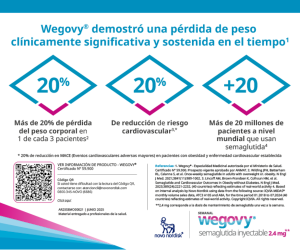What do we know about MODY in pregnancy?
Keywords:
pregnancy, diabetes MODYAbstract
The prevalence of MODY is estimated to be at least 1.1 to 6.5% of the pediatric diabetic population. The GCK-MODY, HNF1A-MODY and HNF4A-MODY types represent >90% of MODY cases. While some forms of MODY do not require treatment (GCK-MODY), some others respond very well to oral agents (HNF1A-MODY).
The risk of micro- and macrovascular complications also differs significantly between MODY forms. It is estimated that between 50-90% of cases are misdiagnosed as type 1 or type 2 diabetes. Many patients with MODY, especially those with an alteration of the glucokinase gene (GCK-MODY), may be diagnosed for the first time during pregnancy. It is estimated that MODY patients represent up to 5% of the cases of gestational diabetes (GDM) found in its systematic screening.
Suspected MODY should be considered in thin women around 25 years of age, with a positive family history of diabetes in one parent. The differentiation of MODY from GDM is of particular importance not only because of the different management and objectives of antidiabetic therapy, the planning of ultrasound monitoring of fetal growth during pregnancy, but also because of the risk of hyperinsulinemic hypoglycemia in newborns.
The situation is peculiar in GCK-MODY women during pregnancy for three reasons: 1.- The degree of maternal hyperglycemia is sufficient to induce adverse outcomes in pregnancy, as in pregestational cases or gestational diabetes. 2.- The probability that a fetus will inherit the maternal mutation is 50%. 3.- Fetal insulin secretion is an important stimulus for fetal growth. Consequently, when the fetus has not inherited the mutation, maternal hyperglycemia will trigger increased fetal insulin secretion that will impact growth, with a high risk of macrosomia. In contrast, when the fetus has inherited the maternal mutation, its insulin secretion is set up at the same threshold as that of the mother, and no excess fetal growth will occur. Therefore treatment of maternal hyperglycemia is necessary only in the first situation and will lead to a risk of fetal growth restriction in the second. In conclusion, we can say that the diagnosis of MODY in pregnancy is important to define therapeutic behaviors. The presence of clinical features, with 3 (or more) negative type 1 diabetes antibodies, followed by genetic testing may be indicative of the presence of monogenic diabetes (MODY). An additional tool useful for determining the risk of this type of diabetes is the MODY clinical risk calculator, accessible through the Exeter Diabetes App.
References
I. Timsit J, Ciangura C, Dubois-Laforgue D, Saint-Martin C, Bellanne-Chantelot C. Pregnancy in women with monogenic diabetes due to pathogenic variants of the glucokinase gene: lessons and challenges. Frontiers in Endocrinology 2022;12.
II. Kirzhner A, Barak O, Vaisbuch E, Zornitzki T, Schiller T. The challenges of treating glucokinase MODY during pregnancy: a review of maternal and fetal outcomes. Int J Environ Res Public Health 2022;19:5980. doi: 10.3390/ijerph19105980.
III. Tosur M, Philipson LH. Precision diabetes: Lessons learned from maturity-onset diabetes of the young (MODY). Diabetes Investig 2022;13(9).
IV. Broome DT, Pantalone KM, Kashyap SR, Philipson LH. Approach to the patient with MODY-monogenic diabetes. J Clin Endocrinol Metab 2021 Jan;106(1):237-250.
Downloads
Published
Issue
Section
License
Copyright (c) 2024 on behalf of the authors. Reproduction rights: Argentine Society of Diabetes

This work is licensed under a Creative Commons Attribution-NonCommercial-NoDerivatives 4.0 International License.
Dirección Nacional de Derecho de Autor, Exp. N° 5.333.129. Instituto Nacional de la Propiedad Industrial, Marca «Revista de la Sociedad Argentina de Diabetes - Asociación Civil» N° de concesión 2.605.405 y N° de disposición 1.404/13.
La Revista de la SAD está licenciada bajo Licencia Creative Commons Atribución – No Comercial – Sin Obra Derivada 4.0 Internacional.
Por otra parte, la Revista SAD permite que los autores mantengan los derechos de autor sin restricciones.




























